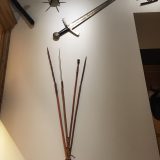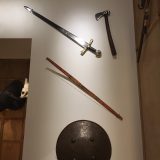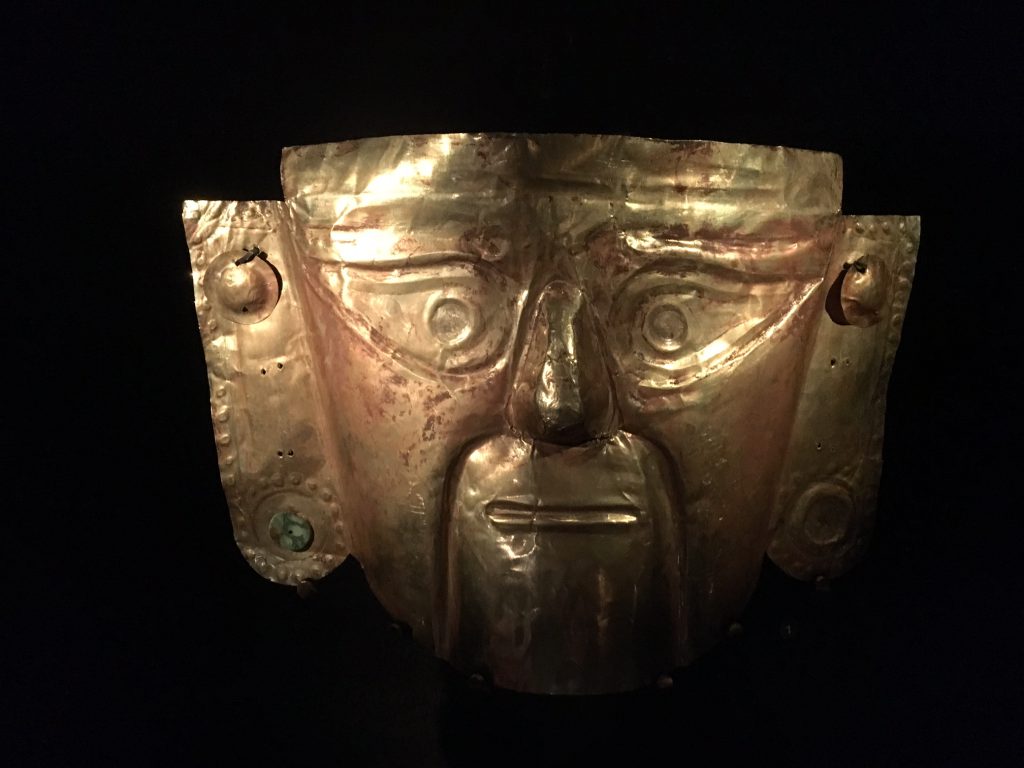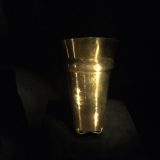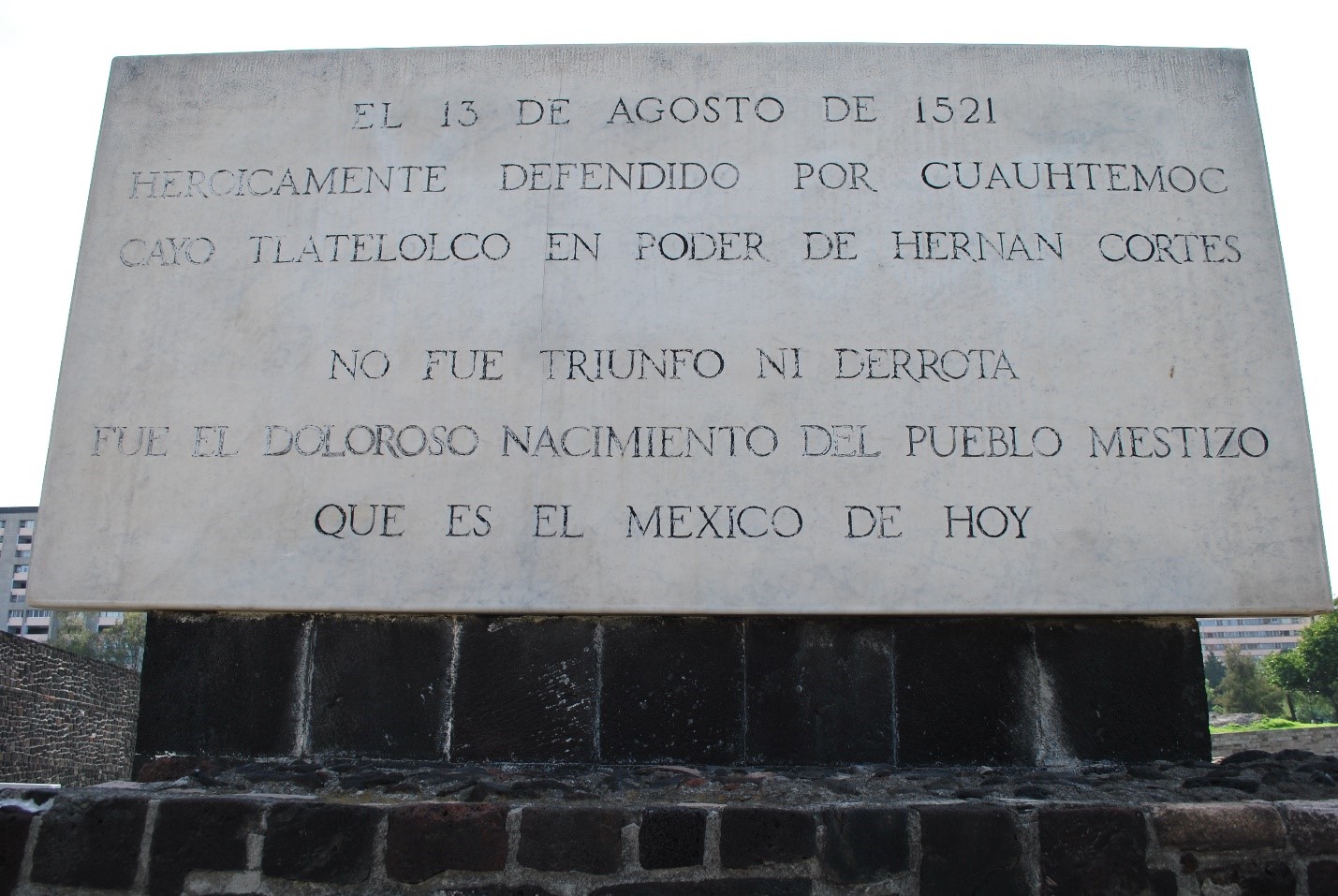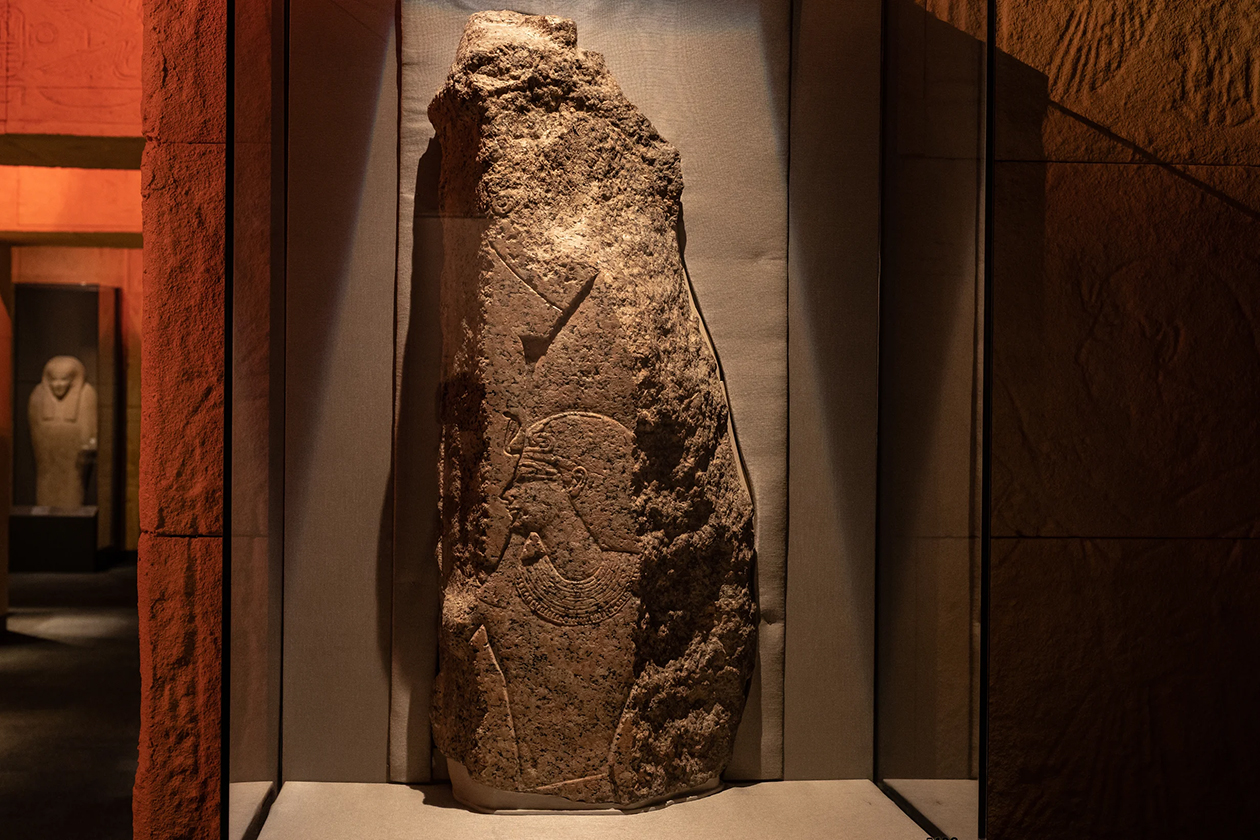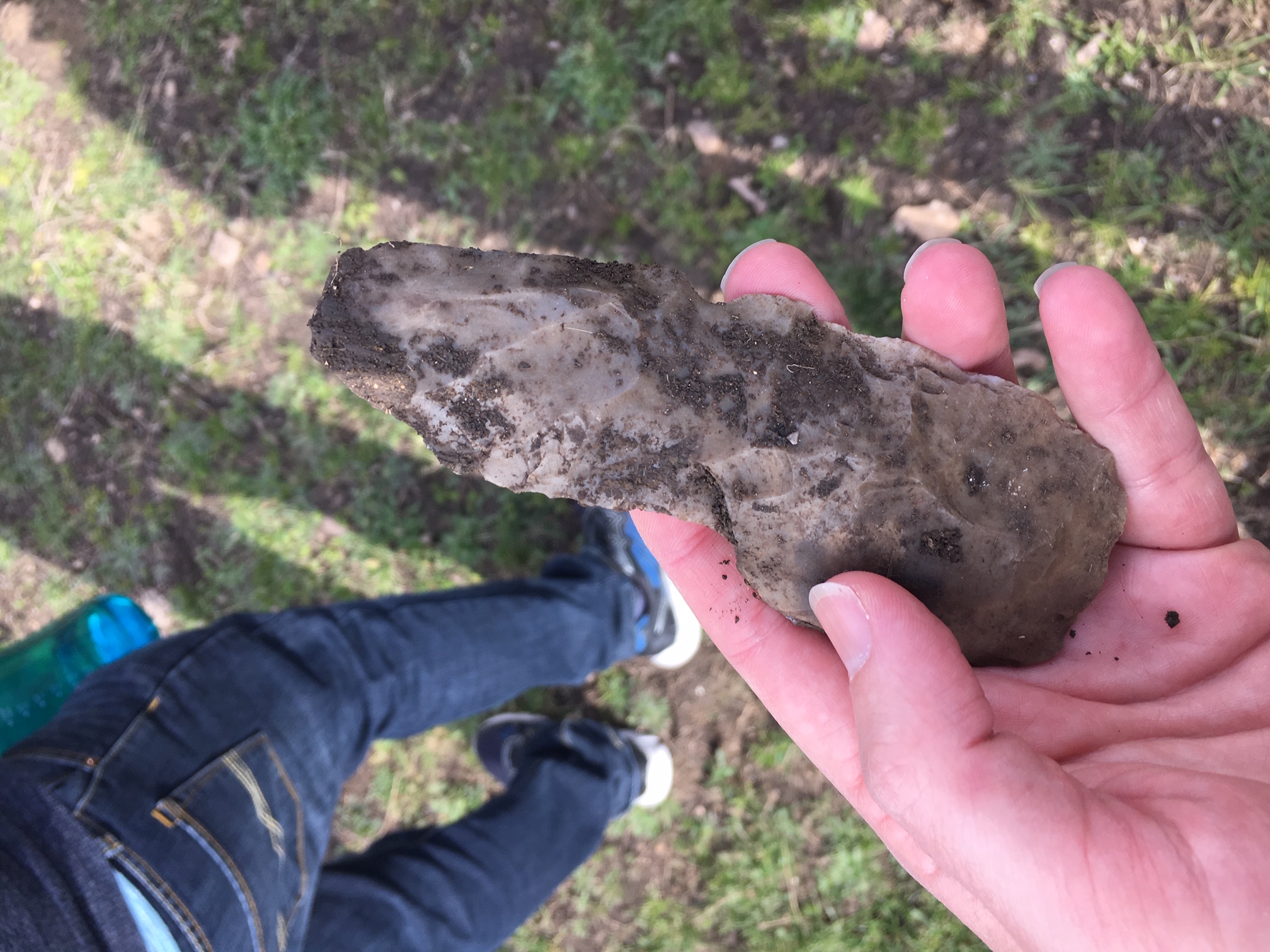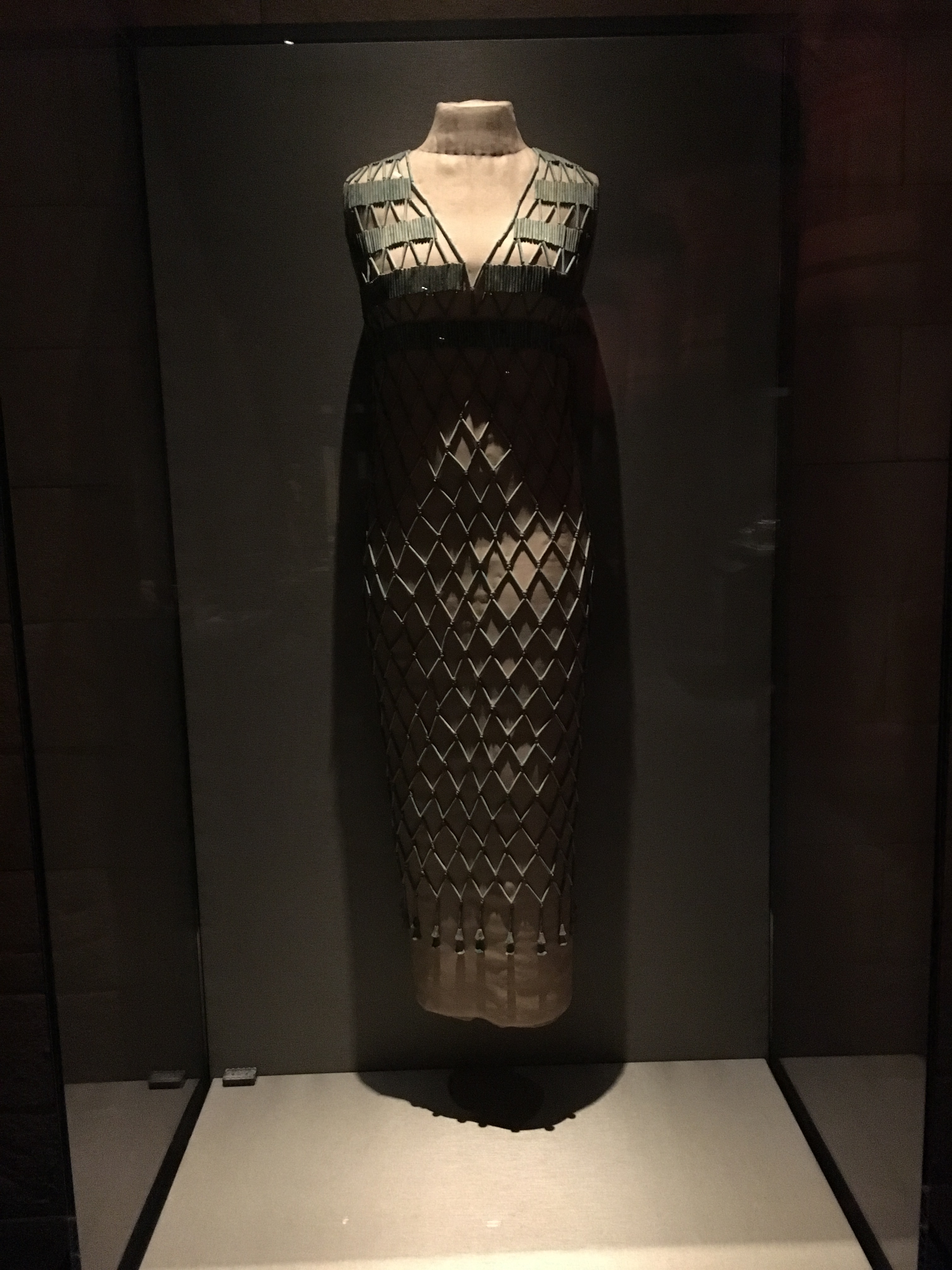So today is National Talk Like a Pirate Day, and a lot of people have been asking me if we have any pirate-related (piratical?) objects in our collection at HMNS.
One thing I can say with certainty is that a pirate in a jam would be lucky to find himself roaming through our halls. We have many deadly weapons for him (or her) to choose from. Whether he prefer his weapons to be heavy, blunt, sharp, serrated, we have what he needs in our Cabinet of Curiosities. We also have lots of of gold, from our little Egyptian statue of Herishef to our remarkable natural gold formation called “the dragon”. Of course, none of these weapons or gold objects are things a Caribbean Pirate (the one whose voice is apparently being honored today) would have encountered in reality.
But we also have a small collection of gold cups and a wonderful gold mask produced by the Sican culture of Peru around a thousand years ago, and these beautiful objects can actually be linked to Caribbean pirates.
How so? Because pirates want gold doubloons! And the doubloons making their way across the Caribbean in the 15th – 18th centuries, when the most famous pirates roamed, were produced from gold found in the New World. From the mid-1500’s on, most New World gold and silver was mined in places like Mexico, Peru and Panama, but in the early days of the conquests a heavy portion of the precious metals being sent to Spain from the New World was looted from indigenous Cultures. Many artifacts like the ones on display in our Hall of the Americas were melted down to make coins.
Is the link still too tenuous for you? Well, listen to this: Hernan Cortes’ first Shipment of treasure (mostly gold) looted from Tenochtitlan to Spain was intercepted by a French privateer named Jean Fleury. So the original Caribbean pirate booty was Native American artifacts (albeit, from the Aztec, who lived in a whole other hemisphere than the Sican).
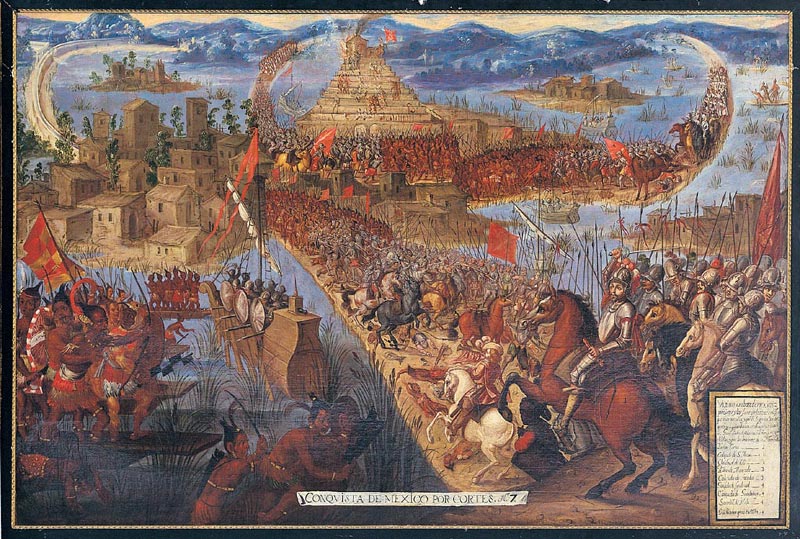
“The Conquest of Tenochtitlán”, from the Conquest of México series. Second half of 17th century. Representing the 1521 Fall of Tenochtitlan, in the Spanish conquest of the Aztec Empire. Artist unknown. Image courtesy of Wikimedia Commons.
Precious metals, gold in particular, have a way of being passed along; either as family heirlooms, currency or even as plunder. Next time you slip on your gold necklace, ring or watch, remember that at one time the gold composing your little piece of jewelry may have once formed a beautiful mask like the one pictured above.


